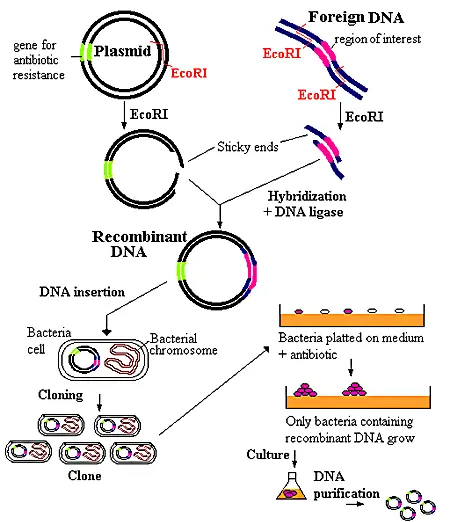What Is Foreign DNA?
Foreign DNA refers to genetic material that originates outside of an organism’s own genome. In humans, this can come from a variety of sources such as viruses, bacteria, parasites, food, or even environmental exposure. While our cells are programmed to recognise “self” DNA, foreign DNA is considered “non-self” and may trigger biological responses. Importantly, foreign DNA doesn't always enter the nucleus or become part of our own DNA but in some rare cases, it can integrate or persist in tissues, leading to important physiological consequences. Understanding where it comes from and how it behaves in the body is essential to evaluating its potential impact.
How the Body Detects and Responds to Foreign DNA
Our immune system is designed to recognize and react to foreign DNA. Specialized sensors, like Toll-like receptors (TLRs) and cGAS-STING pathways, can detect unusual DNA in the cytoplasm of cells a red flag since human DNA is normally contained within the nucleus or mitochondria. Once detected, these sensors can trigger immune responses such as the release of interferons and other inflammatory molecules. While this is vital for defending against infections, chronic exposure or dysregulation of this process may lead to autoimmune diseases or tissue damage. The body’s response to foreign DNA is a double-edged sword: it protects, but when unbalanced, it can harm.
Integration into the Genome: Rare but Real
In some cases, foreign DNA can become part of a person’s genome a process called genetic integration. This occurs most notably with certain viruses like retroviruses (e.g., HIV), which insert their genetic material into host DNA as part of their replication cycle. While rare, this phenomenon is well-documented in biology. The human genome even contains ancient viral DNA remnants, known as endogenous retroviruses, from infections that occurred in our evolutionary past. While integration can be harmless, in some cases it may disrupt important genes, potentially leading to mutations, cancer, or other genetic disorders.
Different steps involved in cloning of foreign DNA
Foreign DNA and Chronic Inflammation
Persistent foreign DNA in the body even in small amounts can cause ongoing immune activation. When the immune system is continually exposed to non-self DNA, it may remain in a heightened state of alert, producing chronic inflammation. Over time, this type of low-level inflammation has been linked to numerous health problems, including cardiovascular disease, neurodegeneration, and metabolic disorders. In some cases, foreign DNA fragments may remain "hidden" within tissues or cells, leading to confusion in the body’s ability to distinguish between foreign and self, potentially contributing to autoimmune reactions.
Potential Health Implications
The presence and persistence of foreign DNA in the body could have wide-ranging health implications. Beyond immune activation and inflammation, foreign genetic fragments might influence processes such as aging, cancer development, or neurological disorders. For example, the accumulation of foreign DNA in brain tissues has been linked in some studies to inflammatory conditions or cognitive decline. Likewise, mitochondrial disorders and metabolic dysfunctions are being explored for possible connections with foreign DNA interference. As research evolves, it’s becoming clear that even small genetic fragments might have outsized effects on biological stability.

